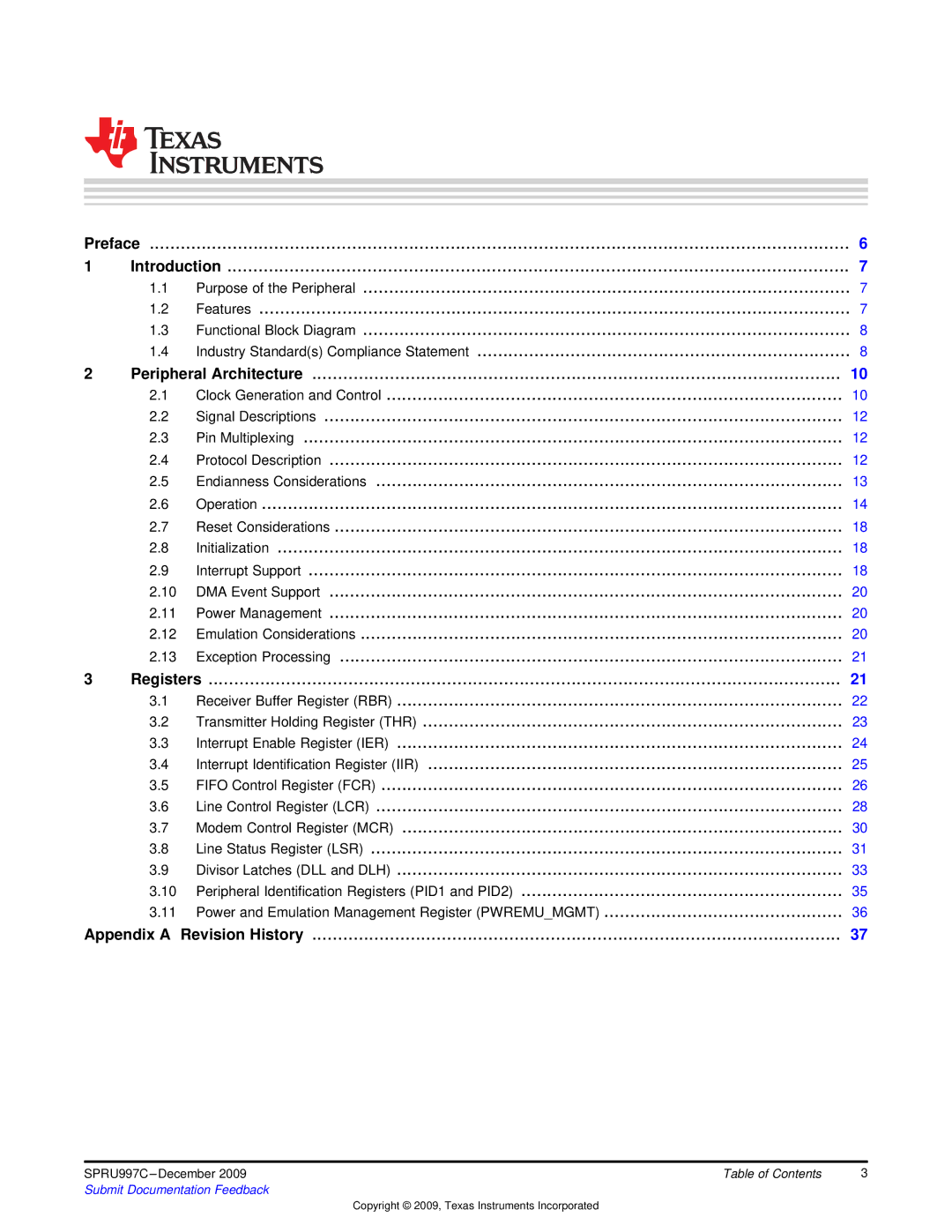
Preface | 6 | ||
1 | Introduction | 7 | |
| 1.1 | Purpose of the Peripheral | 7 |
| 1.2 | Features | 7 |
| 1.3 | Functional Block Diagram | 8 |
| 1.4 | Industry Standard(s) Compliance Statement | 8 |
2 | Peripheral Architecture | 10 | |
| 2.1 | Clock Generation and Control | 10 |
| 2.2 | Signal Descriptions | 12 |
| 2.3 | Pin Multiplexing | 12 |
| 2.4 | Protocol Description | 12 |
| 2.5 | Endianness Considerations | 13 |
| 2.6 | Operation | 14 |
| 2.7 | Reset Considerations | 18 |
| 2.8 | Initialization | 18 |
| 2.9 | Interrupt Support | 18 |
| 2.10 | DMA Event Support | 20 |
| 2.11 | Power Management | 20 |
| 2.12 | Emulation Considerations | 20 |
| 2.13 | Exception Processing | 21 |
3 | Registers | 21 | |
| 3.1 | Receiver Buffer Register (RBR) | 22 |
| 3.2 | Transmitter Holding Register (THR) | 23 |
| 3.3 | Interrupt Enable Register (IER) | 24 |
| 3.4 | Interrupt Identification Register (IIR) | 25 |
| 3.5 | FIFO Control Register (FCR) | 26 |
| 3.6 | Line Control Register (LCR) | 28 |
| 3.7 | Modem Control Register (MCR) | 30 |
| 3.8 | Line Status Register (LSR) | 31 |
| 3.9 | Divisor Latches (DLL and DLH) | 33 |
| 3.10 | Peripheral Identification Registers (PID1 and PID2) | 35 |
| 3.11 | Power and Emulation Management Register (PWREMU_MGMT) | 36 |
Appendix A | Revision History | 37 | |
SPRU997C | Table of Contents | 3 |
Submit Documentation Feedback |
|
|
Copyright © 2009, Texas Instruments Incorporated
